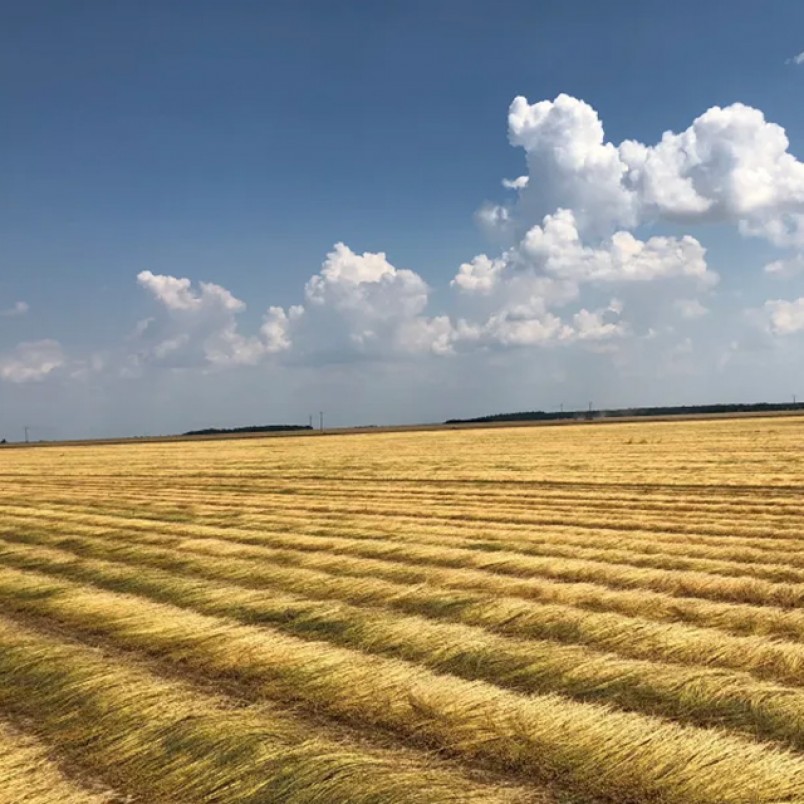The Journey of Linen: From Field to Fabric

Linen is one of the oldest and most beloved fabrics in the world, known for its strength, durability, and breathability. But have you ever wondered how linen goes from a simple flax plant to the beautiful fabric we use for clothing and home textiles? Let's take a detailed look at the fascinating journey of linen, from field to fabric.
1. Cultivating Flax
The journey begins in the fields, where flax plants are carefully cultivated. Flax is an annual plant that thrives in cooler climates with well-drained soil. The seeds are sown in early spring, and the plants grow to a height of about three to four feet within 100 days. The quality of flax fibers depends greatly on the growing conditions, so farmers pay close attention to the weather, soil, and watering to ensure the best possible yield.
2. Harvesting
Flax is harvested when the lower part of the plant starts to turn yellow, but before the seeds are fully ripe. This timing is crucial as it affects the quality of the fibers. The entire plant is pulled from the ground to keep the fibers as long as possible. These long fibers are what give linen its unique strength and smooth texture.
3. Retting
Once harvested, the flax plants go through a process called retting. This involves soaking the plants in water or leaving them in the field to be exposed to dew and rain. Retting breaks down the pectins that bind the fibers to the stem, making it easier to separate them. This process can take anywhere from a few days to several weeks, depending on the method used.
4. Breaking and Scutching
After retting, the dried flax is put through a breaking process, which breaks the woody stalks into smaller pieces. The broken stalks are then scutched, a process that removes the broken pieces of stalk from the fibers. This is usually done by passing the flax through rollers or beating it with wooden blades.
5. Hackling
The next step is hackling, where the fibers are combed through a series of metal combs to remove any remaining bits of stalk and to separate the long fibers from the short ones. The long fibers, known as line flax, are used for high-quality linen fabric, while the short fibers, called tow, are used for coarser products.
6. Spinning
The cleaned and separated flax fibers are then spun into yarn. This can be done by hand or using a spinning machine. The fibers are drawn out and twisted to form a continuous thread, which is then wound onto spools. The fineness and strength of the yarn depend on the quality of the flax and the skill of the spinner.
7. Weaving
The linen yarn is woven into fabric using looms. There are various types of weaves, each giving the fabric a different texture and strength. The most common weave for linen is plain weave, but twill and damask weaves are also popular for their unique patterns and durability.
8. Finishing
The final step is finishing, which involves washing, bleaching, dyeing, and sometimes treating the fabric to enhance its softness and durability. Linen can be left its natural color or dyed in a wide range of colors. The fabric is then inspected for quality, rolled, and prepared for sale.
Conclusion
The journey from flax field to linen fabric is a meticulous and time-consuming process, but the result is a fabric that is highly valued for its beauty, strength, and versatility. Whether it's for a stylish summer dress, a cozy set of bed linens, or a durable kitchen towel, linen continues to be a beloved choice for many people around the world.
Understanding this journey not only helps us appreciate the skill and craftsmanship involved but also highlights the natural and sustainable qualities of linen. Next time you enjoy the comfort of your linen clothing or home textiles, you'll know the incredible journey it took to get to you.
